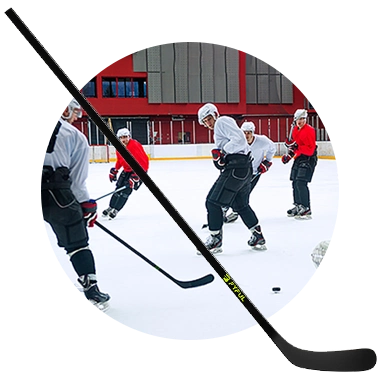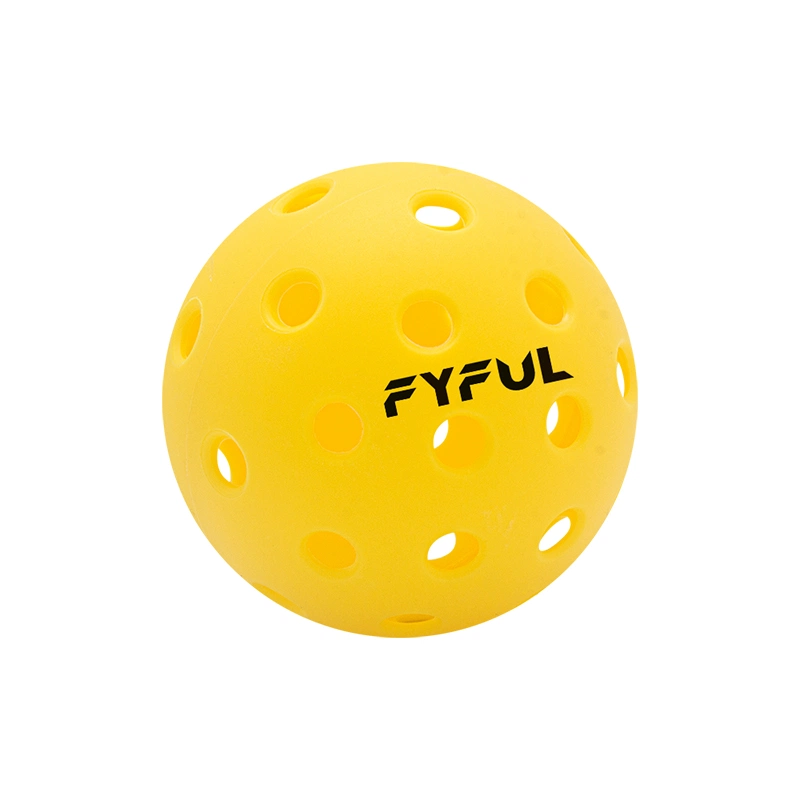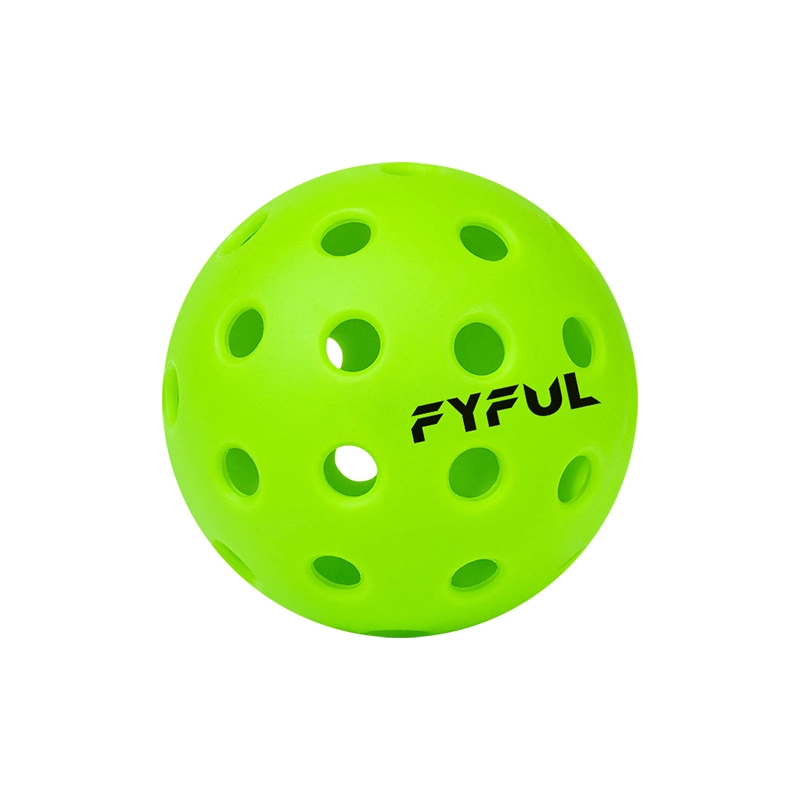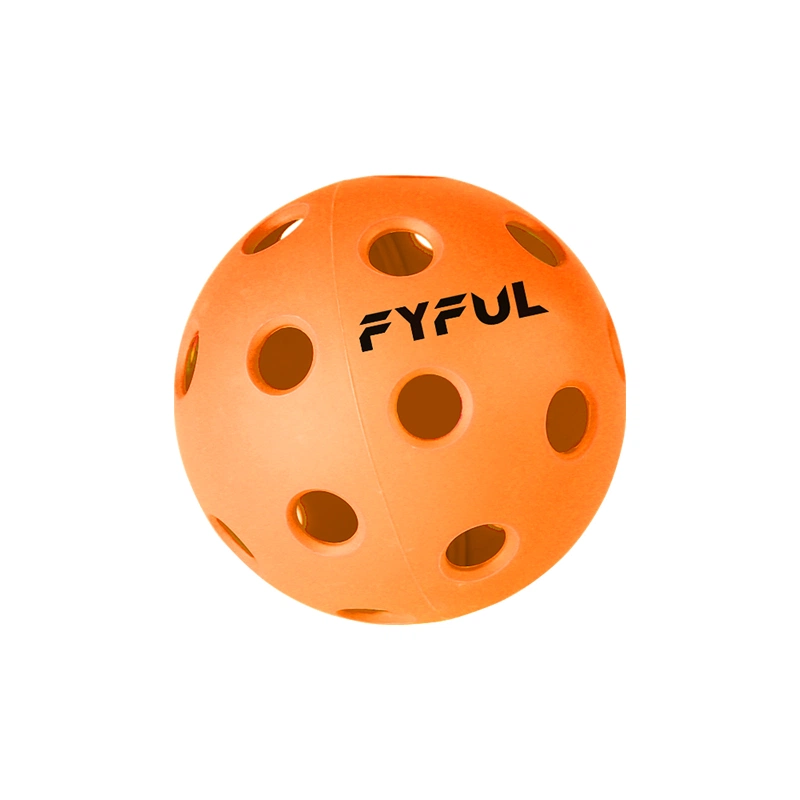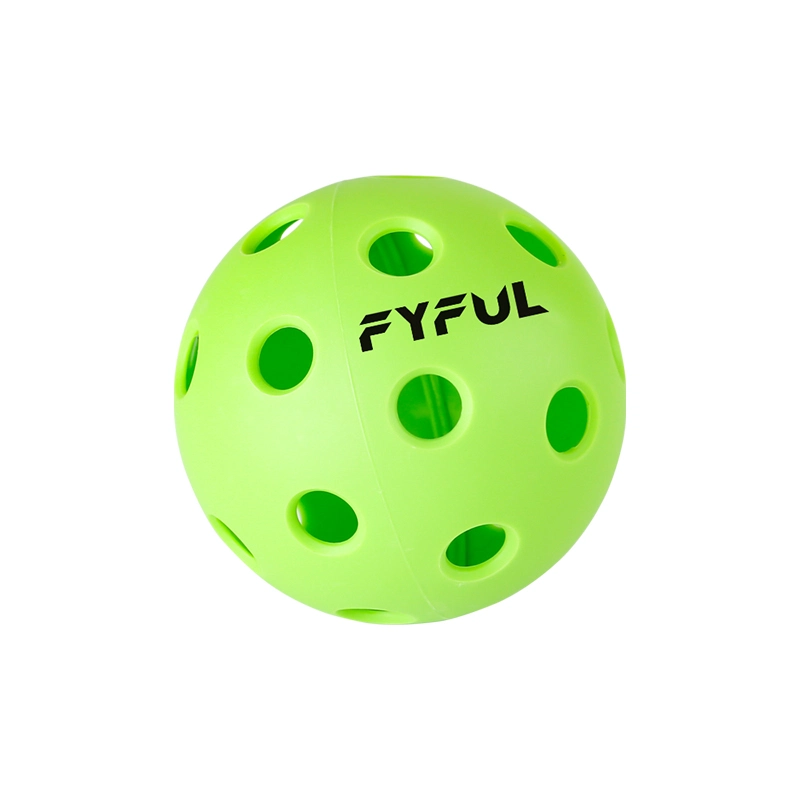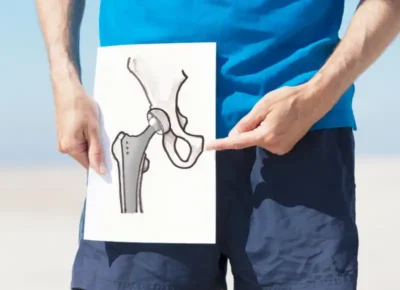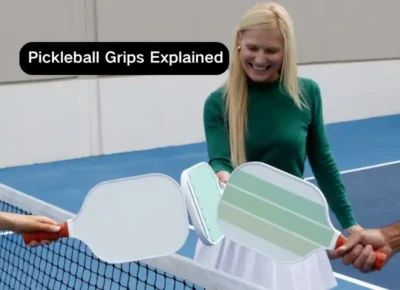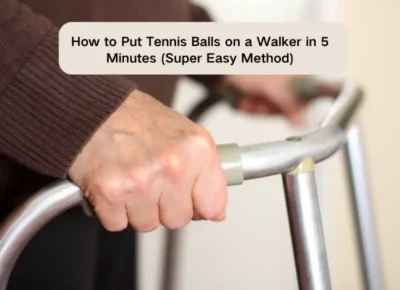Pickleball is a dynamic and engaging sport that continues to grow in popularity around the world. With its blend of elements from tennis, badminton, and table tennis, pickleball offers players of all ages and skill levels a fun and competitive way to stay active and socialize.
From its humble beginnings in the 1960s to its widespread adoption in community centers, schools, and recreational facilities today, pickleball has evolved into a sport embraced by millions globally. Its inclusive nature, simple rules, and emphasis on strategy make it accessible to newcomers while still offering a challenge to seasoned athletes. Pickleball games are usually played among the four players. Singles can also play the game.
In this guide, we will discuss the common pickleball terms and definitions used in this game. The Complete Pickleball Glossary of terms is given below.
A -
Ace:
In pickleball, an ace refers to a serve that the receiver fails to touch with their paddle, resulting in a point for the server. A well-executed ace typically lands deep in the opponent’s court, making it difficult for them to return.
Approach Shot:
An approach shot in pickleball is a strategic shot played by a player approaching the net, usually following a deep return or a defensive lob. The purpose of this pickleball shot is to set up an advantageous position at the net for a put-away volley or overhead smash.
Around The Post (ATP):
Around the Post, often abbreviated as ATP, is a spectacular shot in pickleball where the ball is hit outside the net post and travels around it to land within the opponent’s court. This shot requires precise timing, angle, and finesse, often surprising opponents and earning admiration from spectators for its difficulty and style.
Attack: In pickleball, to attack means to aggressively and decisively play offensive shots aimed at putting pressure on the opponent and winning points. Attack shots can include hard drives, smashes, and dinks executed with the intention of forcing errors or creating opportunities for winners.
B -
Backcourt:
In pickleball, the backcourt refers to the area of the court farthest from the net, where players typically return shots and defend against opponents’ attacks. Players in the backcourt often use groundstrokes and defensive shots to keep the ball in play and set up opportunities to move forward.
Backhand:
The backhand shot in pickleball is executed by swinging the paddle with the back of the hand facing the direction of the shot. Players use the backhand to return shots hit to the opposite side of their body, requiring different techniques and footwork compared to the forehand.
Backspin:
Backspin in pickleball refers to the rotation of the ball that causes it to spin backward after being struck, resulting in a downward trajectory and bounce. Players use backspin to control the height and speed of their shots, often employing it in defensive slices and drop shots to keep the ball low and difficult to attack.
Backswing:
The backswing in pickleball is the preparatory movement of the paddle backward before striking the ball, generating power and momentum for the shot. Players adjust the length and speed of their backswing based on the type of trick shot they intend to play, such as a drive, volley, or smash.
Banger:
In pickleball, a banger refers to a powerful and aggressive shot aimed at overwhelming the opponent with pace and force. Bangers are typically executed with a full swing, generating maximum power to drive the ball deep into the opponent’s court, often leading to difficult returns.
Baseline:
The baseline in pickleball is the boundary line at the back of the court, marking the farthest limit of play in the lengthwise direction. Players often use the baseline as a reference point for positioning during rallies and as a defensive position to return deep shots.
Bert:
In pickleball slang, Bert refers to a soft and delicate shot, often executed with a gentle flick of the wrist to drop the ball over the net. Berts are commonly used to counter hard-hitting opponents or to set up opportunities for putaway volleys or overhead smashes.
Body Bag:
Body Bag in pickleball slang refers to a shot aimed directly at the opponent, specifically targeting their midsection or body to limit their ability to return the ball effectively. This aggressive tactic puts pressure on the opponent and can disrupt their positioning and timing, often resulting in a weak or missed return.
Body Shot:
A body shot in pickleball refers to a shot aimed directly at the opponent’s body, making it difficult for them to return with their paddle. Body shots are often used strategically to exploit weaknesses in the opponent’s positioning or to force errors under pressure.
Bounce It:
“Bounce It” is a common call in pickleball signaling to a partner to let the ball bounce before hitting it, typically used during serve receive to allow for a higher percentage return. Ball bounces give players more time to react and set up for their shots, increasing consistency and control during rallies.
C -
Carry:
A carry occurs when a player hits the ball in a way that it momentarily rests on or comes to a halt on their paddle before being struck again, which is against the rules. Carries are considered faults and result in a point for the opposing team, as they provide an unfair advantage by allowing the player to manipulate the ball’s trajectory.
Centerline:
The centerline in pickleball refers to the line dividing the court into two equal halves, extending from the non-volley zone line to the baseline. Players must observe the centerline rule, which prohibits them from volleying the ball while standing in the non-volley zone unless the ball has bounced first.
Champion Shot:
The champion shot in pickleball refers to a skillful and decisive shot executed with precision and consistency, often associated with top-level players. Champion shots vary depending on the situation but typically involve strategic placement, power, and control, showcasing the player’s mastery of the game.
Chop:
The chop in pickleball is a shot where the paddle is swung downward and slightly forward, imparting a backspin on the ball to keep it low and slow its speed. Chops are effective defensive shots used to counter hard-hitting opponents and set up opportunities for a more offensive response.
Continental Grip:
The continental grip in pickleball involves holding the paddle with the V-shaped space between the thumb and index finger aligned with the top of the handle. This grip is versatile, allowing players to easily transition between forehand and backhand shots with minimal adjustment, making it popular among experienced players.
Cookie:
A cookie refers to a high, floating shot that is easy for the opponent to attack or put away with a smash. Cookies are considered unforced errors and are often punished by skilled opponents, leading to lost points or momentum shifts in the game.
Cross-Court:
Cross-court in pickleball refers to hitting the ball diagonally across the net to the opponent’s diagonal court, aiming to create wide angles and exploit open spaces. Cross-court shots are effective for changing the direction of play, stretching opponents’ defenses, and setting up opportunities for winners.
D -
Dead Ball:
A dead ball refers to a situation where the point ends due to a fault, violation, or stoppage in play, resulting in no point awarded to either team. Dead balls occur when the ball goes out of bounds, a fault is committed, or there’s an interruption in play, such as interference or equipment failure.
Dig:
A dig in pickleball is a defensive shot played in response to a hard-hit ball, usually executed with a quick and controlled stroke to return the ball back into play. Digs require precise timing, reflexes, and agility to anticipate and react to powerful shots from opponents, often keeping rallies alive and turning defensive situations into offensive opportunities. It is a kind of similar to the dink shot.
Dillball:
Dillball is a slang term in pickleball used to describe a soft shot that is hit with excessive spin, causing the ball to curve or dip unpredictably. Players may intentionally put dill on the ball to make it harder for opponents to anticipate the trajectory, leading to errors or difficulty in returning the shot.
Dink:
A dink in pickleball is a soft shot played with finesse, usually executed close to the net with a gentle tapping motion to drop the ball over the net. The Dink shot is effective for placing the ball precisely in difficult-to-reach areas. This pickleball shot forces opponents to move quickly and often sets up opportunities for winners.
Dinner:
In pickleball slang, “dinner” refers to a shot hit that is placed so perfectly that it sets up an easy winner for the player, often leaving the opponent scrambling or unable to respond effectively. This term implies that the shot served up the opponent’s downfall, akin to serving them a metaphorical “dinner.”
Double Bounce Rule:
The double bounce rule in pickleball requires that each team must allow the ball to bounce once on each side of the net before volleys are permitted. This rule ensures fair play and encourages longer rallies by preventing players from volleying the ball directly out of the air, except within the non-volley zone. If the ball bounces more than once, the player loses the rally.
Double Elimination:
Double elimination is a tournament format in pickleball where players or teams are eliminated from the competition after losing two matches This format provides participants with a second chance by allowing them to compete in a consolation bracket after their initial loss, increasing the overall competitiveness of the tournament.
Double Hit:
A double shot hit in pickleball occurs when a player strikes the ball twice in succession with the paddle during a single stroke or swing. Double hits are considered faults and result in a point awarded to the opposing team, as they violate the rule against hitting the ball twice before it has bounced.
Doubles:
Doubles in pickleball refers to a match format where two players on each team compete against each other, totaling four players on the court. Mixed Doubles matches require teamwork, communication, and strategic positioning to cover the court effectively and capitalize on scoring opportunities.
Down The Line:
Down the line in pickleball refers to hitting the ball straight and parallel to the sidelines, aiming to keep the ball close to the boundary and make it difficult for the opposing side to reach or return. Down-the-line shots are effective for changing the direction of play, stretching opponents’ defenses, and creating opportunities for winners.
Drive:
A drive in pickleball is a fast, aggressive, or sometimes offensive shot played with power and speed, typically aimed deep into the opponent’s court to put pressure on their defense. Drives are often used to attack weak returns, force errors, or set up opportunities for putaway volleys or overhead smashes.
Drop Shot:
A drop shot in pickleball is a soft and delicate shot played with finesse, usually executed close to the net to make the ball drop quickly and land softly over the net. Drop shots are effective for catching opponents off guard, forcing them to move forward quickly, and setting up opportunities for winners. It is also considered a defensive shot to secure your point. Especially, drop shot volley is a reasonable shot to play as well.
Drop Spin:
Drop spin in pickleball refers to applying backspin to a drop shot, causing the ball to bounce low and slow after crossing the net. Drop spin shots are difficult for opponents to attack or return aggressively, often leading to weak or defensive responses and setting up opportunities for winners.
E -
Erne:
An Erne in pickleball is an advanced and daring shot where a player reaches across the sideline to hit the ball out of the air before it bounces.
F -
Face:
In pickleball, “face” refers to the hitting surface of the paddle, crucial for determining the trajectory and spin of the ball upon contact.
Falafel:
In pickleball slang, “falafel” is used to describe a poorly executed shot those results in a mishit or an unexpected bounce, often leading to a lost point or advantage.
Fault:
A fault in pickleball occurs when a player violates the rules, such as stepping on or over the non-volley zone line during a volley, resulting in the loss of the rally or point.
Flapjack:
In pickleball slang, “flapjack” refers to a shot that is hit too high and with insufficient power, making it an easy target for opponents to attack or put away.
Flat Face:
“Flat face” in pickleball describes a paddle with a smooth and even hitting surface, ideal for generating power and control on shots without imparting excessive spin.
Flick Shot:
A flick shot in pickleball involves a quick and short stroke of the paddle to redirect the ball with speed and accuracy, often used for surprise attacks or defensive maneuvers.
Follow Through:
The follow-through in pickleball refers to the continuation of the paddle’s motion after striking the ball, crucial for generating power, control, and spin on shots.
Foot Fault:
A foot fault in pickleball occurs when a player steps on or over the baseline or sideline while serving, resulting in the loss of the serve or a fault. Any rule violation may cost you a point in the game.
Forehand:
The forehand shot in pickleball involves striking the ball on the dominant side of the body with the palm of the hand facing the direction of the shot, commonly used for power and control. Avoid double hits while playing this shot.
G -
Golden Pickle:
The term “Golden Pickle” is a playful reference to winning a gold medal or achieving a significant victory in pickleball tournaments or competitions.
Graphite:
Graphite in pickleball refers to the material used in some paddles, known for its lightweight, durability, and ability to provide power and control to players.
Grip:
The grip in pickleball refers to how a player holds the paddle, influencing their ability to control the ball and generate power on shots. Common grips include the Eastern, Western, Continental, and Semi-Western grips.
Groundstroke:
A groundstroke in pickleball is a shot played after the ball has bounced, typically executed from the backcourt to return the ball or set up offensive opportunities. Groundstroke shot is essential for maintaining rallies and controlling the pace of play.
H -
Half Volley:
A half volley hit in pickleball refers to a shot where the player strikes the ball immediately after it bounces, often executed close to the net with a quick and controlled stroke. Volley hitting requires precise timing and technique to maintain control and placement.
Head:
In pickleball, “head” typically refers to the widest part of the paddle, opposite the handle, and is the primary area used for striking the ball. The head of the paddle is crucial for generating power, control, and spin-on shots.
Hinder:
In pickleball, a hinder occurs when a player’s shot is affected or impeded by their opponent’s movement, actions, or presence on the court, leading to a stoppage or replay of the point. Hinders can result from interference, obstruction, or distractions during play.
I -
Indoor Ball:
Indoor pickleball balls are used to play pickleball indoors. The sizes of the pores on these balls are slightly different from outdoor balls.
K -
Kitchen:
In pickleball, the kitchen refers to the non-volley zone, a seven-foot-wide area located on both sides of the net. Players are not allowed to volley the ball (hit it in the air without letting it bounce) while standing within the kitchen. This area extends seven feet from the net towards the baseline.
Kitchen Line:
The kitchen line in pickleball is the boundary line marking the edge of the non-volley zone, located seven feet from the net on both sides of the court. Players must observe this line to avoid committing faults while volleying the ball and to maintain proper positioning during play.
L -
Layout:
A strategic arrangement of shots to cover the court effectively and capitalize on opponents’ weaknesses in pickleball.
Let:
A decision to replay the point due to interference or when the serve touches the net and lands in the correct service court. These pickleball terms are used in pickleball tournaments.
Line Calls:
Decisions regarding whether a ball has landed in or out of bounds, crucial for determining the outcome of rallies in pickleball. If pickleball hits outside of these lines, the player loses the rally. For continuous play, a player needs to hit shots rightly.
Lines:
Boundary markings on the court that determine the edges of play and whether a shot is considered in or out during rallies. Half the court is given to one team, and the other half is to the opposing team.
Lob:
A high, arching shot aimed at sending the ball over opponents’ heads and deep into their court, often used for defensive purposes or to create opportunities for offense in pickleball.
N -
Nasty Nelson:
Nasty Nelson is one of the pickleball terms used to describe a shot that is particularly challenging or deceptive, often causing difficulty for opponents to return effectively.
Net Height:
The regulation height of the net in pickleball is 34 inches at the center and 36 inches at the sidelines, ensuring fair play and consistent gameplay across courts.
No Man’s Land:
One of the colloquial pickleball terms refers to the area on the pickleball court between the baseline and the non-volley zone, where players are vulnerable to both deep shots and volleys, making it a challenging position to play from effectively.
Non-Volley Zone (NVZ):
A seven-foot-wide area is adjacent to the net on both sides of the pickleball court, where players are prohibited from volleying the ball (hitting it in the air without letting it bounce). This rule encourages more strategic play and minimizes the dominance of aggressive net play. Non volley line is where the serve should not land. After the serve, players are allowed to play shots in the non-volley line zone to take points, especially in tournament play.
O -
Opa:
An exclamation used in pickleball to celebrate a successful shot or point, often accompanied by enthusiasm and camaraderie among players.
Open Face:
Refers to the orientation of the paddle’s hitting surface where it is angled slightly open, used to generate spin or loft the ball in pickleball.
Out / Out of Bounds:
A call indicating that a ball has landed outside the boundaries of the court, resulting in the loss of the point for the player who hit it.
Outdoor Ball:
Outdoor ball is a type of pickleball specifically designed for outdoor play, typically made of more durable materials to withstand weather conditions such as wind and sun exposure.
Overhead Shot:
A shot hit with the paddle above the player’s head, typically executed to return high balls or to hit aggressively downward on opponents’ shots in pickleball.
Overhead Slam:
A powerful and aggressive shot hit in pickleball where the player strikes the ball forcefully overhead, aiming to hit it downward with significant speed and force, often resulting in a difficult-to-return shot.
P -
Paddle:
Pickleball Paddle is the equipment used to hit the ball in pickleball, typically made of materials like wood, composite, or graphite, with a flat hitting surface and a handle. The best pickleball paddles for you are available at affordable prices.
Paddy:
A colloquial term in pickleball used to describe a particularly soft or gentle shot, often executed with finesse to drop the ball softly over the net.
Painting the Line:
A precise shot in pickleball that lands right on the edge of the court boundary line, leaving opponents unsure whether to play it, as it may be called in or out.
Passing Shot:
A shot in pickleball played to go past the opponent, usually aimed to one side of the court to prevent the opponent from reaching and returning the ball effectively.
Permanent Object:
Any structure or object on or around the pickleball court that is considered a permanent part of the environment, such as fences, posts, or buildings.
Pickle!:
A playful exclamation used in pickleball to signal excitement or amusement, often shouted during rallies or after scoring a point.
Pickled:
A slang term in pickleball refers to a player being caught off guard or unable to return a shot effectively, resulting in the loss of a point.
Pickledome:
A humorous term for a pickleball court, often used to emphasize the enthusiasm and passion surrounding the game.
Pickler:
A nickname for a dedicated or skilled pickleball player, reflecting their love for the sport and expertise in playing.
Poach:
A strategic move in pickleball where one player moves quickly to intercept and volley a ball intended for their partner, often done to surprise opponents and gain control of the point.
Punch Shot:
A shot in pickleball played with a quick and decisive motion, usually aiming to drive the ball forcefully through the opponent’s defenses or to create an offensive opportunity.
Put Away:
A shot in pickleball that decisively ends the point, usually hit with power and accuracy to make it difficult or impossible for the opponent to return.
R -
Rack:
Another term for a pickleball paddle, the equipment used by players to hit the ball during the game.
Rally:
A sequence of consecutive shots exchanged between players or teams in a pickleball match, typically ending when a point is scored.
Rally Score System:
A scoring system in pickleball where points can be scored by both the serving and receiving teams, with each rally resulting in a point regardless of which team served.
Ranking:
The order or position of players or teams in a hierarchy based on their performance in pickleball tournaments, leagues, or competitions.
Ready Position:
The stance adopted by players in pickleball, with knees bent, paddle held in front, and body balanced, ready to move and react to incoming shots.
Receiver:
The player or team that receives the serve in pickleball, responsible for returning the ball and initiating the rally.
Regulation Paddle Size:
The standard dimensions for pickleball paddles as defined by official rules and regulations to ensure fair play and consistency in equipment.
Regulation Pickleball Court:
The official dimensions and markings of a pickleball court as defined by governing bodies ensure uniformity and fairness across different venues.
Replays:
Instances in pickleball where a point or rally is replayed, often due to interference, equipment malfunction, or other unforeseen circumstances.
Reset:
A strategic move in pickleball where players return the ball softly and accurately, typically to regain control of the point or to neutralize aggressive play from opponents.
Return:
The shot played by the receiving team in response to the serve, aimed at initiating the rally and keeping the ball in play.
S -
Sandbagging:
A term in pickleball used to describe the practice of deliberately playing below one’s true skill level in order to gain an advantage, typically by entering lower-level tournaments or leagues.
Scoring:
The method used to determine points and determine the winner in a pickleball match, commonly using rally scoring, where points are scored on every serve.
Scorpion:
A slang term in pickleball referring to a diving or stretching shot where a player reaches out with their paddle resembling a scorpion’s tail, often used to return difficult shots near the ground.
Second Serve:
In a pickleball game, the second attempt to serve the ball after a fault on the first serve is typically allowed in casual play or recreational settings.
Serve:
The act of initiating play in pickleball by striking the ball with the paddle and sending it over the net into the opponent’s service court.
Serve Number:
A term in pickleball referring to the order in which a player serves during a game or match, typically determined by the score or rotation system.
Service Court:
The designated area on the pickleball court where the serve must land to start the point, typically diagonal to the server’s position.
Service Outside Scoring:
A scoring system in pickleball where only the serving team can score points, commonly used in recreational play or informal settings.
Shadowing:
A defensive strategy in pickleball where a player closely follows their opponent’s movements, mirroring their position and anticipating their shots.
Sideline:
The boundary line marking the sides of the pickleball court, determining whether a shot is considered in or out of bounds.
Side-Out:
A term in pickleball indicating that the serving team has lost the serve and the opposing team now has the opportunity to serve.
Singles:
A format of pickleball where one player competes against another player, rather than in doubles where teams of two compete against each other.
Skinny Singles:
A variation of singles pickleball played on a narrower court, typically with only one service court, requiring players to cover more ground.
Slice:
A shot in pickleball where the paddle is angled downward to impart a backspin on the ball, causing it to dip quickly and bounce low after crossing the net. A midair pickleball shot resembles that shot.
Smash:
A powerful and aggressive shot in pickleball, typically executed overhead with the paddle to hit the ball downward with force, often resulting in a difficult-to-return shot. Most players like to smash the ball in the opponent’s feet so that they can’t make forward motions and lose the point.
Split Step:
A movement technique in pickleball where players briefly jump or hop as their opponent hits the ball, allowing them to quickly react and adjust to the incoming shot.
Stacking:
A strategic positioning of players in doubles pickleball is often used to maximize the strengths of each player by alternating their positions during play.
Stroke:
The technique used to hit the ball in pickleball, including various types of shots such as drives, volleys, forward swings, and dinks. However, a stroke toward the opponent’s head is always memorizing to see. A championship match always offers such shots from players.
Switching:
A tactical maneuver in pickleball where players alternate positions during play, typically done to confuse opponents or capitalize on match-ups.
T -
Technical Foul:
A penalty given in pickleball for infractions such as unsportsmanlike conduct, deliberate rule violations, or equipment tampering, resulting in a loss of points or other disciplinary action.
Third Shot Drop:
A strategic shot in pickleball played as the third shot in a rally, typically executed softly with a backspin to land in the opponent’s non-volley zone, aimed at neutralizing aggressive play and setting up a favorable position at the net.
Top Spin:
A type of spin applied to the ball in pickleball where the top of the ball rotates forward, causing it to dip downward and bounce higher after crossing the net, often used to increase speed and control on shots.
Transition Zone:
The area on the pickleball court between the non-volley zone and the baseline, where players often move and adjust their positioning during rallies, transitioning between defensive and offensive play.
Tweener:
A flashy and acrobatic shot in pickleball where a player hits the ball between their legs, typically executed as a last resort to return an otherwise unreachable shot.
Two-Bounce Rule:
A rule in pickleball stating that the ball must bounce once on each side of the net during the rally before players are allowed to volley the ball (hit it in the air without letting it bounce), promoting longer rallies and fair play.
U -
Unattackable Ball:
In pickleball, an unattackable ball refers to a shot that is strategically placed or executed in such a way that it is nearly impossible for the opponent to return with a strong or aggressive shot. This may involve hitting deep, placing the ball low and close to the net, or using spin to make the ball difficult to handle effectively.
USA Pickleball:
USA Pickleball is the national governing body for the sport of pickleball in the United States. It is responsible for organizing tournaments, setting rules and regulations, promoting the growth of the sport, and representing pickleball at national and international levels.
V -
Volley:
A Volley shot in pickleball where the ball is struck in the air, without allowing it to bounce first, typically executed near the net to put pressure on opponents or to end the point aggressively.
Volley Llama:
A slang term in pickleball used to describe an illegal move (a fault) when a player hits a volley shot in the Kitchen, likening their involvement near the net to the behavior of a lively or energetic llama.
Z -
Zero – Zero – Two:
“Zero – Zero – Two” is a sequence in pickleball scoring that indicates the current score in a game. Specifically, it means that the serving team has scored zero points, the receiving team has scored zero points, and the serving team’s second server is serving (indicated by “Two”). This sequence is commonly called out by players or scorekeepers to keep track of the score during a game.
Bottom Line
Pickleball, with its unique combination of finesse and power, offers players an exciting array of shots to master. From the delicate touch of a dink over the net to the thunderous smash that leaves opponents scrambling, each shot in pickleball adds its own flavor to the game. As players navigate the court, they must strategically utilize their serves, volleys, and groundstrokes to outmaneuver their opponents and secure victory.
We have discussed the terms in pickleball one by one. There could be some other funny pickleball terms as well but the most common terms are already there in this guide. Give it a complete read and learn more about the game. Hope it will help more beginners in pickleball to learn more.
Related Post:



